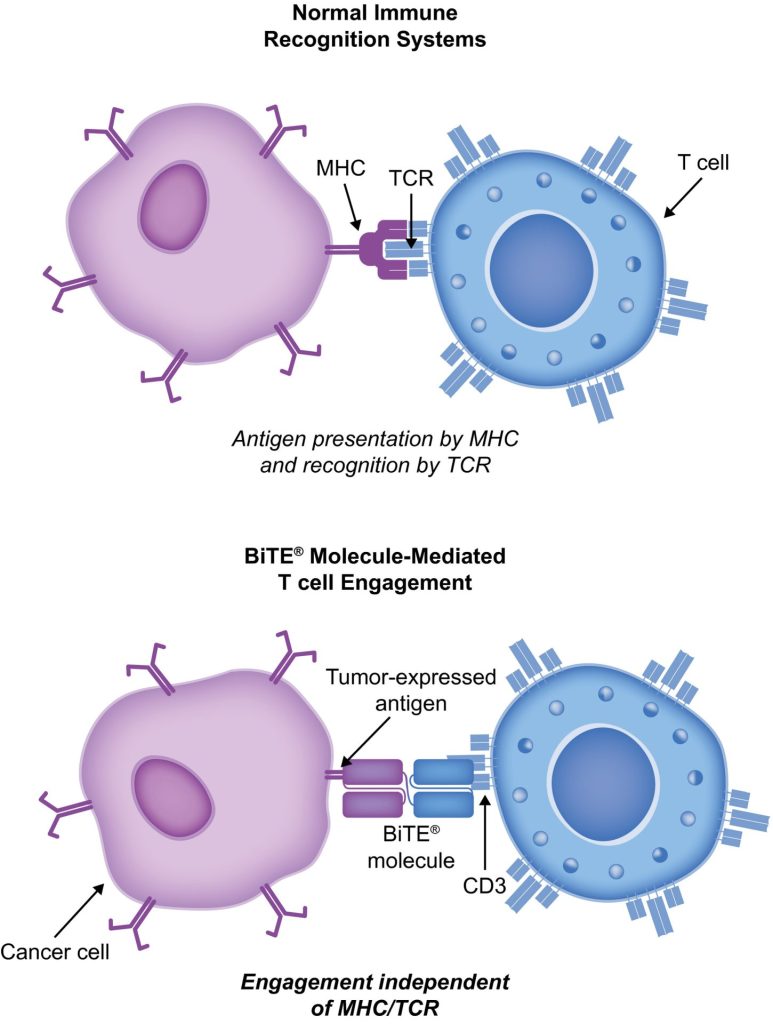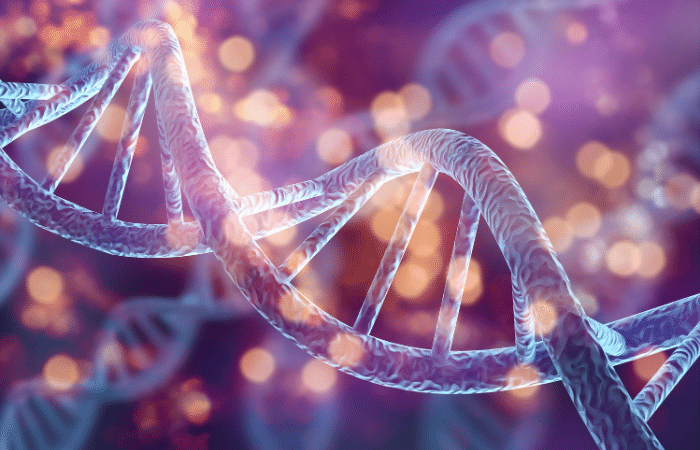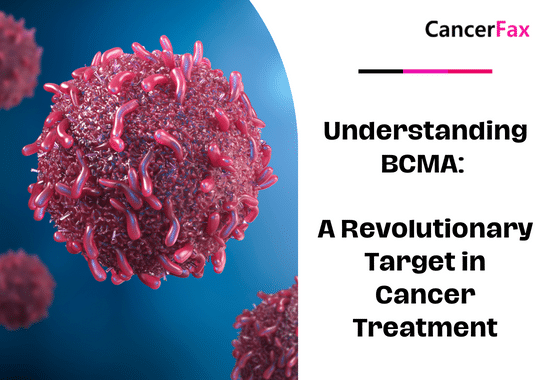Immuno-oncology is a way to treat cancer by using the body’s immune system. BiTE (bispecific T-cell engager) technology is a targeted immuno-oncology platform that binds a patient’s own T cells to cancer cells. Because BiTE technology is flexible, it is easy to make molecules that attack tumor-specific antigens, which makes immuno-oncotherapy possible. Blinatumomab was the first standard BiTE molecule to be approved. It targets CD19 surface antigens on B cells and is mostly unaffected by genetic changes or escape mechanisms inside cells. More BiTE molecules are being made to treat other blood cancers (like multiple myeloma, acute myeloid leukaemia, and B-cell มะเร็งต่อมน้ำเหลืองที่ไม่ใช่ประเดี๋ยวประด๋าว) and solid tumours (like prostate cancer, glioblastoma, stomach cancer, and small-cell lung cancer). BiTE molecules that have a longer half-life than the standard ones are also being made. With BiTE technology, advances in immuno-oncology could make it easier to treat both blood and solid tumours and make them more effective when used with other treatments.
BiTe บำบัดคืออะไร?
Immuno-oncology therapies are scientifically proven ways to treat different types of solid and โรคมะเร็งในเลือด. Hematologic cancers are a good fit for treatments that target the immune system because cancerous blood cells move around with immune cells. Several วัคซีนภูมิแพ้ การรักษามะเร็งอยู่ในระหว่างดำเนินการ
Monoclonal antibody checkpoint inhibitors that stop the binding of checkpoint proteins (like PD-1 and CTLA-4) are useful against many types of cancer. They work well and are safe for many solid tumours, especially when they target PD-1. Non-small-cell lung, kidney, and bladder cancers have all been treated successfully with these drugs. But many people don’t react to checkpoint inhibitors or get sick again after taking them. Except for non-Hodgkin โรคมะเร็งต่อมน้ำเหลือง, most results on hematologic cancers have been disappointing, especially for myeloma and leukaemia, where the overall response rate in approved indications ranges from 12.0% to 48.5%.8-15.
Other immuno-oncology treatments, on the other hand, have a higher success rate. Chimeric antigen-receptor (CAR) T-cell therapies change a patient’s T cells to attack a specific cellular antigen, such as CD19 in the treatment of B-cell malignancies and B-cell maturation antigen (BCMA) in the treatment of หลาย myeloma (MM). CAR T-cell treatments have shown promise in treating hematologic cancers. They haven’t been as effective in treating solid tumours, but there have been some good results with นิวโรบลาสโตมา, human epidermal growth factor receptor tumours, and non-small-cell lung cancer. The genetic modification and in vitro multiplication of T cells take a long and complicated manufacturing process. This is a downside of this therapy because it makes it harder for patients to get this treatment quickly and in large numbers. The fact that lymphodepletion through chemotherapy preparation must be done first as a requirement for improved effectiveness is also a drawback.
การบำบัดด้วย BiTE (ตัวประสาน T-cell ที่มีความจำเพาะแบบคู่) จะเชื่อมโยงทีเซลล์ของผู้ป่วยเองกับแอนติเจนที่แสดงออกของเนื้องอก สิ่งนี้จะเปิดความสามารถที่เป็นพิษต่อเซลล์ของทีเซลล์ของผู้ป่วยเองเพื่อฆ่ามะเร็งโดยไม่ต้องเปลี่ยนยีนของทีเซลล์ หรือจำเป็นต้องเติบโตหรือจัดการพวกมันภายนอกร่างกาย โมเลกุล BiTE สามารถใช้เพียงอย่างเดียวเป็นยาหรือร่วมกับการรักษาอื่นๆ เพื่อให้มีประสิทธิภาพมากขึ้น
กลไกการออกฤทธิ์ของ BiTe
BiTE molecules are antibody constructs with two binding domains. One recognises tumor-expressed antigens (such as พ.ศ, CD19, or -like protein [DLL3]), and the other, CD3, recognises T cells (Fig. 1). Two single-chain variable fragment (scFv) regions from monoclonal antibodies are connected by a flexible peptide linker to make the binding domains. The first scFv binding region can be changed to target any surface antigen, so it can be used right away to treat a wide range of tumours and can be used again later. The second scFv binding region always binds to CD3, which is a part of the T-cell receptor complex that never changes. When a BiTE molecule interacts with both a cytotoxic T cell and a tumour cell, the T cells begin to multiply. This increases the amount of effector cells and makes BiTE therapy more effective. Then, the death of cancer cells is started. BiTE molecules can get any T cells to do this because they don’t need co-stimulation or the usual processes of the major histocompatibility complex.

Blinatumomab is the first and only BiTE therapy that has been approved. It targets the CD19 receptor on both normal and cancerous B cells. It is a highly potent molecule with cytotoxic effects seen at low exposures (10–100 pg/mL)26. In its presence, T cells can perform serial-target lysis, quickly binding to and killing many cells. This is how BiTE therapies work, and it can be seen in other BiTE molecules that are still in research. In มะเร็งเม็ดเลือดขาวชนิดลิมโฟบลาสติกเฉียบพลัน (ALL), blinatumomab has been shown to be effective and safe. In 2014, the US Food and Drug Administration gave it fast approval, and in 2017, it got full approval for relapsed or refractory (R/R) B-cell precursor (BCP) ALL. In 2018, accelerated approval was given to บลินาตูโมมาบ for treating BCP-ALL with minimum residual disease (MRD). This was the first approval for this use. In November 2015, the European Medicines Agency also gave it a green light for BCP-ALL with a Philadelphia chromosome (Ph) that is negative and R/R. Blinatumomab is approved for R/R BCP-ALL in adults and children in 57 countries, including Japan, all countries in the European Union, Canada, and Australia.
Blinatumomab สำหรับการรักษาผู้ป่วย BCP-ALL
Blinatumomab ได้เปลี่ยนวิธีการรักษา BCP-ALL เมื่อเทียบกับยาเคมีบำบัดมาตรฐานการดูแล (SOC) ช่วยเพิ่มอัตราการรอดชีวิตโดยรวม (OS) และลดจำนวนผลข้างเคียง (AEs) การศึกษาที่สำคัญหลายชิ้น รวมถึงการทดลองแบบสุ่มที่มีกลุ่มควบคุม แสดงให้เห็นว่า blinatumomab ปลอดภัยและใช้ได้กับ BCP-ALL ทั้งในเด็กและผู้ใหญ่ สำหรับ การบำบัดด้วย CAR T-cellมีเพียงข้อมูลจากการศึกษาแบบแขนเดียว 2 การศึกษา (clinicaltrials.gov IDs NCT01626495 และ NCT01029366) ซึ่งเด็ก 25 คน (อายุ 5–22 ปี) และผู้ใหญ่ 5 คน (อายุ 26–60 ปี) ที่มี R/R BCP-ALL และ T-cell ALL ได้รับการรักษา แต่ผลลัพธ์ที่ได้ก็น่ายินดี (การตอบสนองที่สมบูรณ์ [CR] ใน 90%, การทุเลาที่ยั่งยืนโดยอัตราการรอดชีวิตแบบไม่มีเหตุการณ์ 6 เดือนใน 67% และอัตราการรอดชีวิตโดยรวม [OS] 78% [การติดตามผลเฉลี่ย 7 เดือน ระยะ 1-24 เดือน])
การศึกษา TOWER (A ระยะที่ 3, การศึกษาแบบสุ่ม, เปิดฉลาก ศึกษาประสิทธิภาพของ BiTE Antibody Blinatumomab เทียบกับมาตรฐานการดูแลเคมีบำบัดในผู้ใหญ่ที่มีอาการกำเริบ/ดื้อยา B-สารตั้งต้น ALL; clinictrials.gov ตัวระบุ NCT02013167) เปรียบเทียบผลของการรักษาด้วยเคมีบำบัดแบบเดี่ยวด้วย blinatumomab กับ SOC ในผู้ใหญ่ที่ได้รับการบำบัดอย่างหนักที่มี Ph-negative, R/R บีซีพี-ออล. เนื่องจากผู้คนมีอายุยืนยาวขึ้น การศึกษาจึงหยุดก่อนกำหนด AEs ในกลุ่ม blinatumomab นั้นเหมือนกับที่พบในการศึกษาก่อนหน้านี้ และ blinatumomab มีอัตรา AE ที่ปรับการรับแสงต่ำกว่า SOC.34 Blinatumomab ยังใช้ได้กับผู้ที่มี Ph-positive, R/R BCP-ALL และสำหรับเด็กที่มี Ph-negative, R/R BCP-ALL
30% to 50% of people with BCP-ALL in complete hematologic remission show persistent MRD. In the single-arm, phase 2 BLAST study (A Confirmatory Multicenter, Single-Arm Study to Assess the Efficacy, Safety, and Tolerability of the BiTE Antibody Blinatumomab in Adult Patients With MRD of B-Precursor Acute Lymphoblastic Leukaemia; clinicaltrials.gov identifier NCT01207388), blinatumomab was tested on patients with BCP-ALL in first or later complete After blinatumomab treatment, 78% of patients who were MRD positive became MRD negative. The 5-year OS study showed a median OS of 36.5 months, and more than half of those who had a complete MRD response after the first cycle of blinatumomab were still alive at 5 years, which suggests that the treatment might be able to cure some patients. AEs were seen that were linked to กลุ่มอาการปล่อยไซโตไคน์ (CRS).31 Other studies, like NCT03023878 and NCT03340766, are still looking at blinatumomab in first-line settings and in combination with other treatments.
CD19-targeted treatments have been linked to failure because of the loss of CD19 antigen after treatment. The failure rates for blinatumomab range from 8% to 35%, and for การบำบัดด้วย T-cell ของรถยนต์, they range from 39% to 65%.36-40 We don’t fully understand what causes therapy to fail, but one possibility is immunoediting, in which antigen loss is caused by a T-cell-dependent process called immunoselection, which lets tumour cells get away.41 Lineage switch and epitope loss under therapy pressure have also been suggested as ways for tumours to escape treatment. However, a recent study on epitope loss found that some CD19 isoforms that help CAR T-cells escape were already present at the time of diagnosis. This suggests that combining treatments might be helpful. Another thing that can cause immunotherapy to fail is called “inhibitory T-cell signalling.” In this case, the blocking programmed death ligand-1 (PD-L1) is interesting because it is more common in B-cell ALL cells from patients who don’t respond to blinatumomab and can make CD3 BiTE molecules less effective.43 By making a CD28/PD-L1 BiTE that triggers the CD28 co-stimulatory signal instead of the inhibitory signaling pathway that is usually seen when a T cell binds to a PD-L1-expressing cancer cell, this inhibition could be turned off.43 Dual-targeted CAR T cells are also being looked into as a way to make up for the loss of tumour antigens. This can be done by modifying each T cell with 2 CAR molecules and 2 different binding domains (dual-signaling CAR) or by putting 2 different binding domains on 1 CAR molecule at the same time (TanCAR).
เหตุการณ์ไม่พึงประสงค์กับ BiTE และฝ่ายบริหาร
ในการศึกษาทางคลินิกของ blinatumomab อาการ AE ที่พบบ่อยที่สุดคือไข้ จำนวนเม็ดเลือดขาวต่ำ และจำนวนเกล็ดเลือดต่ำ ความเสี่ยงที่สำคัญที่สุดบางประการ ได้แก่ CRS ความเป็นพิษต่อระบบประสาท และความผิดพลาดของยา ความเป็นพิษต่อระบบประสาทสามารถเกิดขึ้นได้กับการรักษา CAR T-cell เฉพาะ CD19 แต่อาจไม่ใช่เพราะ CD19 ผลของการศึกษาระยะที่ 1/1b ที่ยังคงดำเนินการเกี่ยวกับเป้าหมาย CD20/CD3 แสดงให้เห็นว่า CNS AEs ในระดับ 3 หรือสูงกว่านั้นหายาก (3% ของ AEs เกรด 3 ทั้งหมด) ส่วนใหญ่แล้ว ปฏิกิริยาของ blinatumomab ต่อ CRS นั้นไม่รุนแรง แต่ในบางกรณีอาจรุนแรงและถึงแก่ชีวิตได้ ปฏิกิริยาการอักเสบสามารถลดลงได้ด้วยคอร์ติโคสเตียรอยด์ เพื่อลดโอกาสเกิด CRS ควรฉีดยาเพรดนิโซนหรือเดกซาเมทาโซนก่อนการให้ยาบลินาทูมาบครั้งแรก และเพิ่มขนาดยาอย่างช้าๆ การใช้คอร์ติโคสเตียรอยด์ก่อนโมเลกุล BiTE อื่นๆ ได้ให้เหตุผลในการใช้เดกซาเมทาโซนเป็นยาล่วงหน้าเมื่อใช้โมเลกุล BiTE อื่นๆ อย่างไรก็ตาม ยังไม่เป็นที่แน่ชัดว่าผลกระทบนี้สามารถนำไปใช้กับแพลตฟอร์ม BiTE ทั้งหมดได้หรือไม่ และกำลังพิจารณาวิธีอื่นๆ ในการจัดการกับ CRS Interleukin 6 เป็นไซโตไคน์ที่ทำให้เกิด CRS และมีปริมาณสูงในผู้ที่มี มีการใช้โทซิลิซูแมบซึ่งปิดกั้นตัวรับอินเตอร์ลิวคิน-6 เพื่อรักษา CRS ที่แย่มากหลังการรักษาด้วย CAR T-cell49 ในโรงพยาบาล มีการใช้สารยับยั้งปัจจัยเนื้อร้ายของเนื้องอกเพื่อรักษา CRS เช่นกัน


